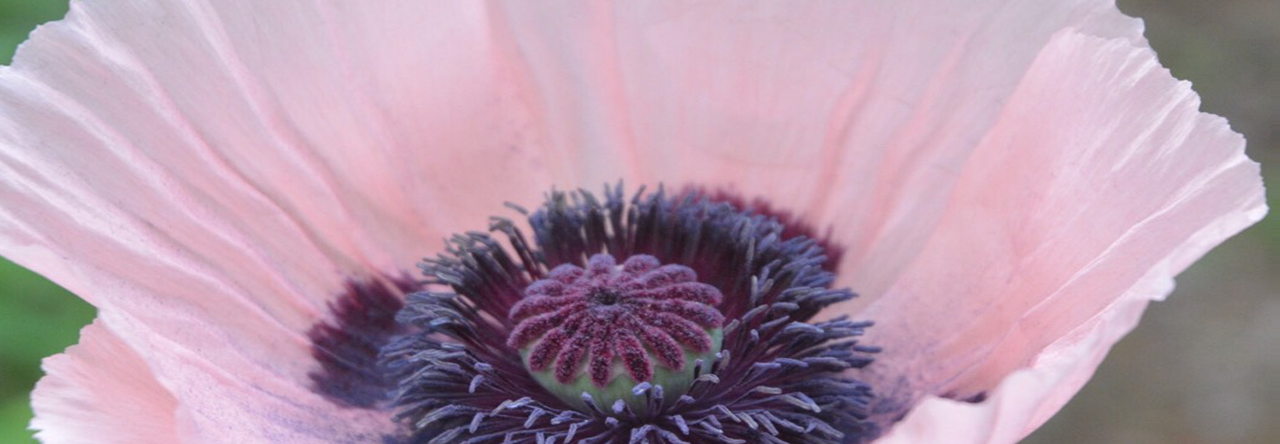~George M. Malkmus
“What Did God Tell Us We Should Eat.” We now move on to Chapter 9 of the book of Genesis:
“Every moving thing that liveth shall be meat (food) for you; even as the green herb have I given you all things (See Genesis 1:29), but flesh with the life there-of, which is the blood thereof, shall ye not eat.”
~ Genesis 9:3
This is the verse concerning the consumption of animal source foods that is used more often than any other in an attempt to refute Hallelujah Acres’ teachings.
When I use Genesis 1:29 as a proof text that God intended His human creation to consume a 100% plant-based diet, it is Genesis 9:3 that critics immediately point to in their attempt to prove me wrong. In fact, most of the opposition to the Hallelujah Diet has been based on this one verse!
As we begin to examine this verse, let’s take a moment to review what we have learned thus far in this series…
In Genesis 1:29, God, immediately after creating Adam, gave him a pure, raw, 100% living plant foods diet to sustain the physical body He, God, had just created!
And for approximately the next 1,700 years (after Adam and Eve had sinned and sin had entered the human race), which takes us from Genesis 1:29 through chapter 8, there is absolutely no indication of God giving mankind permission to eat anything other than that pure raw plant-based diet He had given His human creation in Genesis 1:29.
Flood Covers and Destroys All Plant Life
As we come to chapter 9, let’s remember what had just transpired. In Genesis, chapters 6, 7, and 8, we learned that a great flood had covered the entire earth, destroying all plant life.
“And the waters prevailed exceedingly upon the earth: and all the high hills that were under the whole heaven were covered.”
~ Genesis 7:19
“And the waters prevailed upon the earth an hundred and fifty days.”
~ Genesis 7:24
The flood had destroyed all the fruits and vegetables, seeds and nuts that God had originally told man in Genesis 1:29 that he was to eat for food and the nourishment of their bodies — the very foods man had consumed to sustain his physical life for the 1,700 years preceding the flood! But now the flood had destroyed all of these raw plant foods!
God Gives Permission To Eat Flesh For The First Time
With their 100% plant food source destroyed by the flood, what were they going to eat in order to sustain their lives and thus stay alive?
God tells them what they can eat to stay alive in Genesis 9:3:
“Every moving thing that liveth shall be meat (food) for you; even as the green herb have I given you all things, but flesh with the life thereof, which is the blood thereof, shall ye not eat.”
It would appear from this verse, that in order to sustain man’s life after the flood had destroyed all plant foods, God gives man permission to eat the raw flesh of the clean animals they had brought with them onto the ark, at God’s instructions.
However, God did place some restrictions on how they were to eat that flesh in Genesis 9:4:
“…but flesh with the life thereof, which is the blood thereof, shall ye not eat.”
This was a brand new experience for Adam and his family, who had previously consumed a 100% raw, plant-based diet. Now God is telling them that they can eat the flesh of the clean animals they had brought with them onto the ark, but with certain restrictions.
Here God is clearly telling them they can eat the flesh of the animals, but that they were not to eat the flesh of the animal while it was still alive, while the blood was still in its flesh.
So God gives them permission to slay an animal for food for the very first time, and to eat the raw flesh of that animal.
When I say that they were given permission to eat the raw flesh of the animal, I am often challenged by those trying to refute my “raw flesh” theory. But let’s remember that there is absolutely no Biblical evidence that man cooked the flesh God had given man permission to eat here in Genesis 9.
Bible’s First Mention of Fire
According to both my Young’s and Strong’s concordances, the very first use of the word “fire”, recorded in the Bible, did not occur until Genesis 19:24 where we read “then the Lord rained upon Sodom and Gomorrah brimstone and fire from the Lord out of heaven.”
This first mention of fire occurred around the year 1898 BC, which is some 2,000 years after creation.
The second time we find the word “fire” in the Bible — and the first time man is recorded as using fire — is found in Genesis 22:6-7:
“and Abraham took the wood of the burnt offering, and laid it upon Isaac his son, and he took the fire in his hand…”
The estimated time of this first mention of man using fire, occurred around the year 1872 BC, almost 30 years after God had “rained upon Sodom and Gomorrah brimstone and fire.”
And it is not until we get to the book of Exodus we are told not to eat the flesh raw anymore:
“eat not of it raw . . . but roast with FIRE . . .”
~ Exodus 12:9
Thus, it wasn’t until this event took place around the year 1491 BC — some 500 years after Abram took “fire” to the mountain in order to offer a sacrifice and 2,500 years after creation — that we find fire being used for the first time in the preparation of food.
I find the Scriptures in Exodus Chapter 12 to be most interesting concerning all we have been talking about.
In verses 4-12 of Exodus 12 we read:
“and the Lord spake unto Moses and Aaron in the land of Egypt saying . . . take a lamb . . .your lamb shall be without blemish . . . take of the blood, and strike it on the two side posts and on the upper door post . . . and they shall eat the flesh . . . eat not of it raw . . . but roast with fire . . . and ye shall let nothing of it remain until the morning; and that which remaineth of it . . . shall ye burn with fire.”
I find several things of great interest in these verses:
1.Here we find fire being used in the preparation of food for the very first time in the Scriptures.
2.God says they should not eat the flesh raw.
3.They are to burn any leftover flesh.
If it was not until Exodus 12 that God told man he should not eat the flesh of the lamb raw, but rather to roast it, would it not stand to reason that in Genesis 9:3 and all those years prior to Exodus 12, man did eat the flesh of animals raw?
Note also, that God told them to burn any leftover flesh. Why? Because man had no means of refrigeration. Without refrigeration, animal flesh putrefies quite rapidly. Thus God, for health reasons, told them to burn the leftovers so that they wouldn’t get sick by eating rotten flesh.
Back When I Was A Kid…
I was born in 1934. When I was a boy, I remember the iceman delivering ice, by horse-drawn wagon, to my grandmother’s icebox. My other grandmother didn’t even have electricity when I was a boy, and the only means she had of keeping food was in the basement, which had a year round temperature around 50F.
Today, we tend to think in terms of what we have available to us at the current time.
Here are a few questions for those who so vehemently oppose the idea that man was intended to consume animal-source foods…
Man’s Anatomy Was Not Designed To Process Flesh
This might be a good time to examine the anatomy of man; to see how God designed our bodies to process food, and see what happens when animal flesh is introduced into it:
1.Our body was designed by God to move food quickly through a very lengthy digestive tract, comprised of many pockets and loops and bends, by means of fiber. Fiber can only be found in plant-source foods. There is absolutely no fiber in anything of animal origin!
2.Because there is no fiber in animal source foods, animal flesh moves very sluggishly through a very lengthy digestive tract, in an almost 100F degree atmosphere, and putrefies. That is why those who consume animal source foods have to use a deodorant, to cover the rotting flesh odor coming through the skin.
3.The human physical body also has a weak solution of hydrochloric acid in the stomach; it cannot properly break down animal flesh as can carnivorous animals, which have very high hydrochloric acid content.
4.Carnivorous animals, in contrast, have very sharp claws and teeth, with which to catch its prey, rip the flesh off in chunks, and have a very short digestive tract with a very high concentration of hydrochloric acid in its stomach to break down the flesh and get it clear out of its body before it putrefies, causing health problems.
There is much more that could be shared here, but it might be well to remember that it is the highly acidic, putrefied animal source foods being consumed today, that cause almost all of man’s digestive problems, especially colon problems. Also, the high protein found in animal source foods is one of the primary causes and feeders of cancer.
How much animal flesh man consumed immediately following the flood, or what percentage of his daily food intake consisted of animal flesh in those early Bible days is not known. But once the flood waters had receded and crops had been re-planted, I believe that man was intended to go back to consuming a primarily plant-based diet!
Something else we need to remember here is that point I raised earlier: no refrigeration. Once an animal was killed, it had to be consumed almost immediately, before it had time to putrefy. Thus it is very doubtful that, once the gardens were producing, humans ate very much animal flesh.
Also, in those Bible days, a man’s wealth was not determined by how much paper money he had in cash or in the bank, or in stocks and bonds. A man’s wealth was determined by the number of animals in his herd, and it is doubtful he would have killed and eaten very much of his wealth.
One thing we know for sure, man did not have bacon and eggs, or sausage and pancakes for breakfast, a hamburger for lunch, and some kind of a meat entrée (i.e. fried chicken) for dinner.
Our research and experience here at Hallelujah Acres reveals that animal-source foods are either the cause or a contributing cause of up to 90% of all the physical problems being experienced today.
If this is true, and it can be proven to be so, is it not foolish to cling to Genesis 9:3, to justify the consuming of animal source foods?






